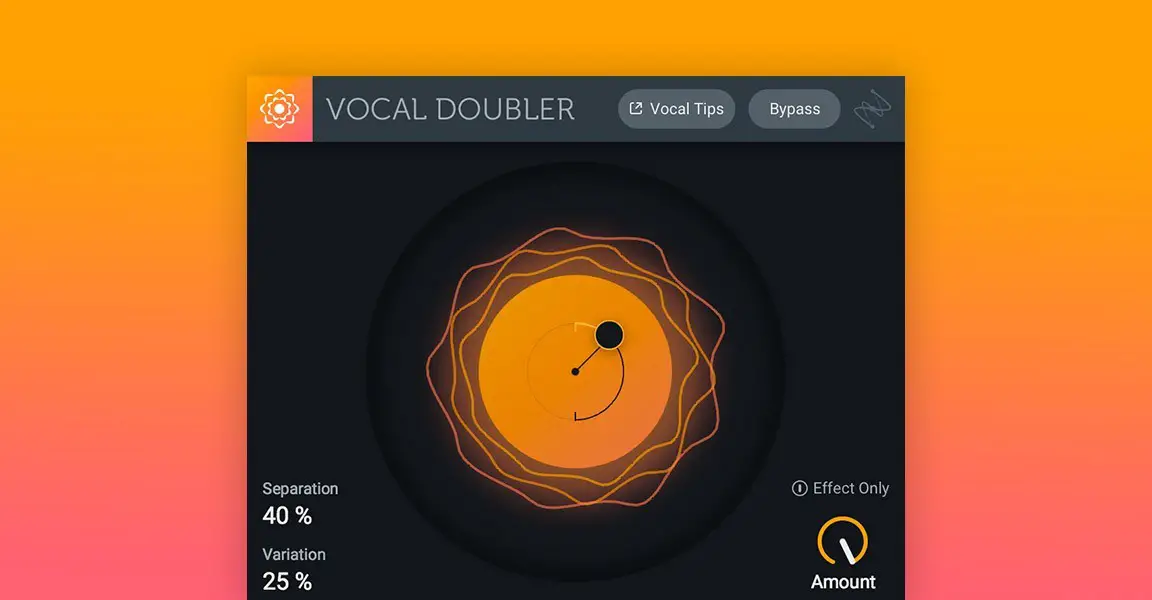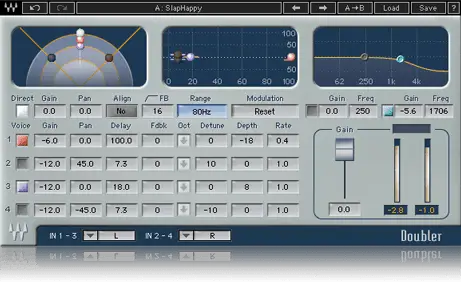In this blog post, you'll learn my favorite vocal thickening techniques that you can use on any reputable DAW, Including FL Studio, Logic, Ableton, Cubase, etc.
Fixing a thin vocal and getting it to sound thick is often a step-by-step process.
Doing it this way can help you avoid messing with the character of the vocal.
How To Make Vocals Fuller (Thick & Warm Sound)
Processing the vocal in different stages is usually the better way to make the singer’s voice sound thick and warm so that it can cut through a mix while keeping it sounding natural.
The first step is always to get the right sound during recording.
It All Start At The Source

This is really crucial to mention because there’s someone out there who’s recording bad quality vocals thinking that they’ll fix it in the mix.
That’s almost always a bad approach and the reason in most cases, if not all, poor recordings can’t compete with other commercially successful songs.
If you can get the right sound straight from the source then you’ll avoid having to go through the process of fixing thin-sounding vocals.
But it happens that you’re working with a client or you just can’t re-record. Then let’s look at some ways for dealing with thin vocals.
How Do You Fix Thin Vocals?
There are many ways to skin a cat so I’ll share some of the ways that I use and techniques that have worked for me in the past.
I prefer to fix thin vocals in stages to avoid over-processing or making the performance sound unnatural.
Usually, a vocal will sound thin because it wasn’t recorded well so a minor amount of processing in different stages preserves the characteristics and quality of the voice.
The different stages include EQ, distortion, parallel compression, etc.
Let’s start with EQ…
Thickening Vocals With EQ

Image Credits: sweetwater.com
When it comes to getting vocals to sound warmer and thick, EQ is mostly the first thing that comes to mind.
There are certain EQs that are designed for this purpose.
My favorite ones at the moment I’m writing this post are the Pultec and Maag EQ4 emulations.
If you’re working on a well-recorded vocal then a bump in the bass and lower midrange with a Pultec EQ or the Maag EQ4 can get you the desired results much faster.
It’s not rocket science.
Also, make sure that you create a high pass filter below 80Hz to remove any rumble, hum, and low “p” or “b” sounds.
When working on poorly recorded material then you might want to use a different vocal EQ approach.
This is where dynamic tools shine.
Making a Voice Sound Warm Using Dynamic Tools

The advantage of using dynamic EQ or multiband compression on a poorly recorded voice is that you can create controlled boosts.
You’ll be able to bring up the midrange meat that’s missing on a thin vocal in a controlled and musical way.
Basically, you create dynamic boosts without bringing up the imperfections of the recording.
Dynamic tools will boost or cut only when it’s necessary.
In some cases, you might need to simply reduce the harsh frequencies so that the midrange frequencies can become audible.
Before creating heavy boosts in the bass and lower midrange, try reducing harsh frequencies and sibilance.
This could be what’s preventing the vocals from sounding thick.
Be creative with dynamic tools such as de-esser, compressor, dynamic EQ, and multiband compression to achieve a well-balanced frequency response and get the voice to fit perfectly in the mix.
Don’t get carried away though, you don’t want to expose the flaws of the recording. So minor adjustments will keep the timbre of the voice intact.
Parallel compression is another amazing technique you can use to help a poor recording sound more expensive.
Using Reverb to Get Make Vocals Sound Fuller

To thicken up vocals using reverb will require a combination of EQ and a reverb unit or plugin.
Since it’s always recommended to eq the reverb signal then, in this case, the goal will be to use an EQ to add warmth and make the vocal reverb signal sound thick.
Using a dedicated Fx channel will give you more flexibility and control. I use the first slot to add an EQ that’s used to clean the vocal before it hits the reverb.
This is not a rule, it’s just a matter of taste.
Essentially, I often use a shelf filter to reduce everything below 80Hz. A boost in the lower mids and bass.
Since this is a parallel track, I usually go a bit crazy on the EQ to make sure that I bring up the meat of the voice without getting it to sound muddy.
It’s a good idea to use a linear phase EQ to avoid creating phase issues. Also, check that the linear phase EQ is not causing any comb filtering.
For the reverb settings, a short decay time and quick reflections usually work best to thicken up the reverb. This causes a dense sound and adds more depth to the voice, as opposed to a wide and spacious reverb sound.
So, use a combination of both EQ and reverb to help vocals sound thicker in a mix.
Saturating a Singer’s Voice

Saturation can be used to fix thin vocals. It adds rich harmonics and applies subtle forms of “soft-clipping” compression.
This unique effect makes sounds fuller, and increases perceived loudness. A saturation plugin also adds depth, character, color, presence, and warmth.
Exactly what a thin vocal needs.
It is recommended to create an Fx channel when applying saturation on vocals so that you can have more control and flexibility.
For instance, you don’t really need the harmonics in the top-end to get a vocal to sound warmer. You typically need those to help sounds cut through a mix.
So, to add warmth your focus should normally be on the bass and lower midrange frequencies.
That’s why using an Fx channel will be a wise choice. You can add EQ or dynamic tools to control and shape the saturation signal.
Another great way to get the best results is to use a multiband saturation plugin. With a multiband, you can affect various frequency bands differently. This gives you control and you have the flexibility to achieve the goal much faster.
Saturation can also be used to thicken up vocal effects such as the reverb, delay, chorus, etc.
However, be careful not to end up adding too much saturation. Only add it when it’s necessary and if it will benefit the vocals.
You can also check out my previous tutorial about mixing vocal harmonies to learn more about getting background vocals to sound fuller.
Best Vocal Doubler Plugin
Now, let’s look at some of my favorite plugins that are designed to thicken up vocals.
- iZotope Vocal Doubler
- Soundtoys Microshift
- Waves Doubler
iZotope Vocal Doubler

The Vocal Doubler by iZotope is designed to add emotion, build intensity, and give your choruses/hooks a boost.
The UI makes it easy to use with its real-time feedback so that you’re able to check how much the signal is getting affected. It is designed to give you instant results with its ease of use and it sounds different from other Doubler plug-ins (which is not a bad thing).
The Vocal Doubler adds a natural doubling effect, adding richness and depth. Resulting in an expensive, thick, and warm vocal sound.
Did I mention that it’s free?
It’s an amazing tool, the simple, clean UI helps cut down on learning time so that you’re able to jump straight to crafting a full, wide, and thick vocal mix fast.
Soundtoys Microshift

For many years, engineers have been using a technique called micro shifting to get thick and wide vocal sounds.
Little MicroShift emulates the three most popular settings from the legendary H3000 and DMX 15-80 hardware pitch shifters to help you add rich stereo width and thickness in an incredibly simple interface.
It’s a great tool to thicken up the backgrounds and other supporting vocals to get them to sound fuller in a mix. Designed to be ideal for adding "shimmer" to a vocal.
Although it’s an old technique, micro shifting is still a vital part of most mix engineers’ "bag of tricks".
You can also automate the effect for a more dramatic feel and to create contrast between different sections of the song.
Waves Doubler

The Waves Doubler uses delay and pitch modulation to deliver extraordinary richness and texture on vocals.
It adds sheen, shimmer, and presence to a voice. For such a simple plugin, the Waves Audio team has created an extremely versatile and highly musical doubling plugin.
Doubler has an amazing lush sound when used on the lead vocals, and can thicken up supporting vocals so that they sound fuller and big in a mix.
The sound is distinctly analog (without digital brittle top-end harshness), and it's hard to resist using it on every single mix that you work on.
Be careful not to overuse these vocal thickening plugins on the lead vocal because they’ll push the voice at the back of the mix. That’s what you typically want for supporting vocals, not so much for the lead vocal.
Wrap
This post should help you get any type of vocal to sound thick and warm without getting overpowered by the instrumentation.
Remember to use the techniques in stages, especially if you’re working on a poorly recorded voice.
In some cases, you might need to apply all the techniques mentioned above in small doses till you achieve your goal.
Sometimes one or two of these tips may do the job. So, be careful not to overprocess your vocals. Only apply what will work best for that particular voice, and don’t fix anything that is not broken.
That’s it for today’s tutorial.
I trust that you found it valuable and you’ll put all these techniques to good use.
